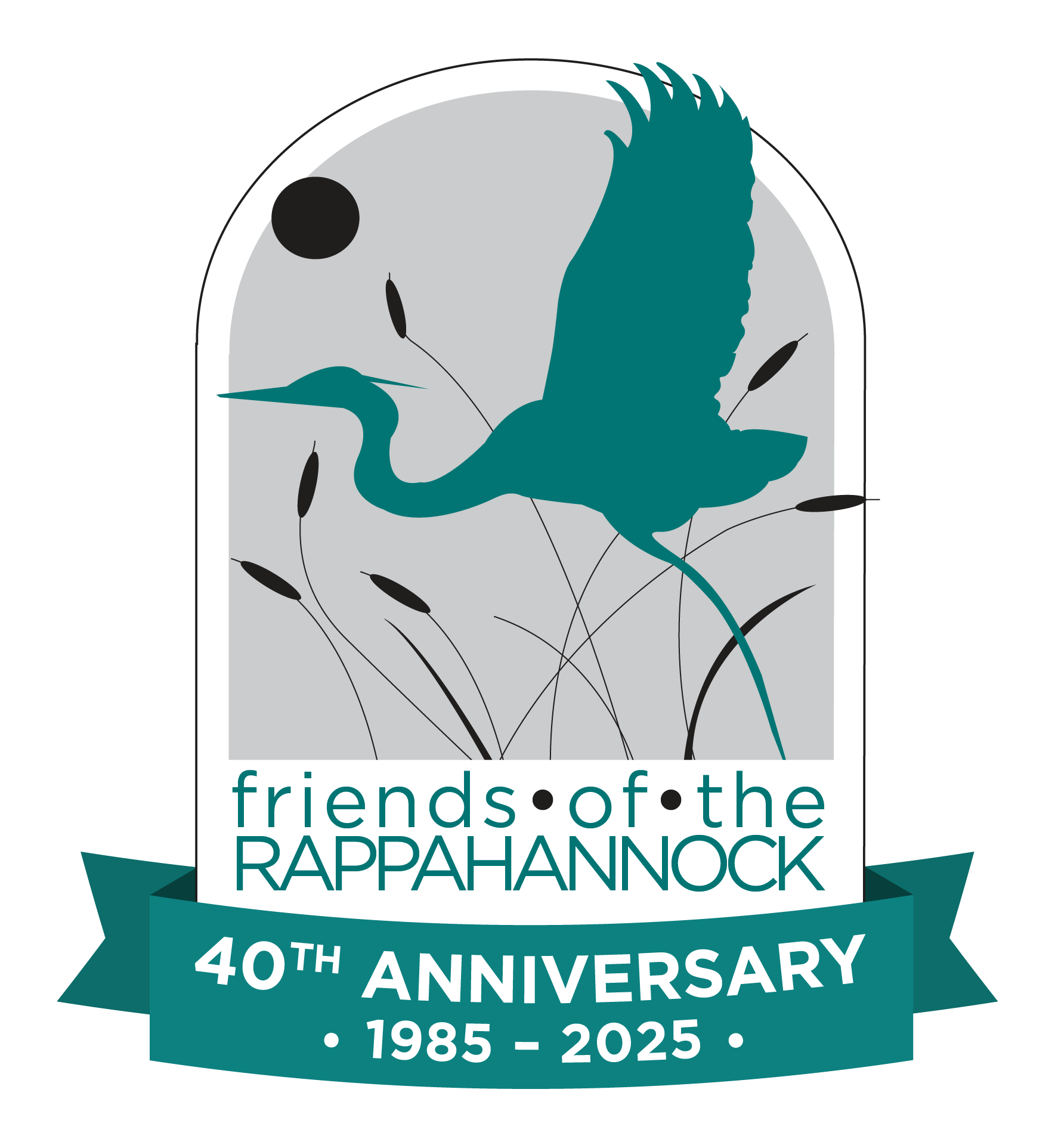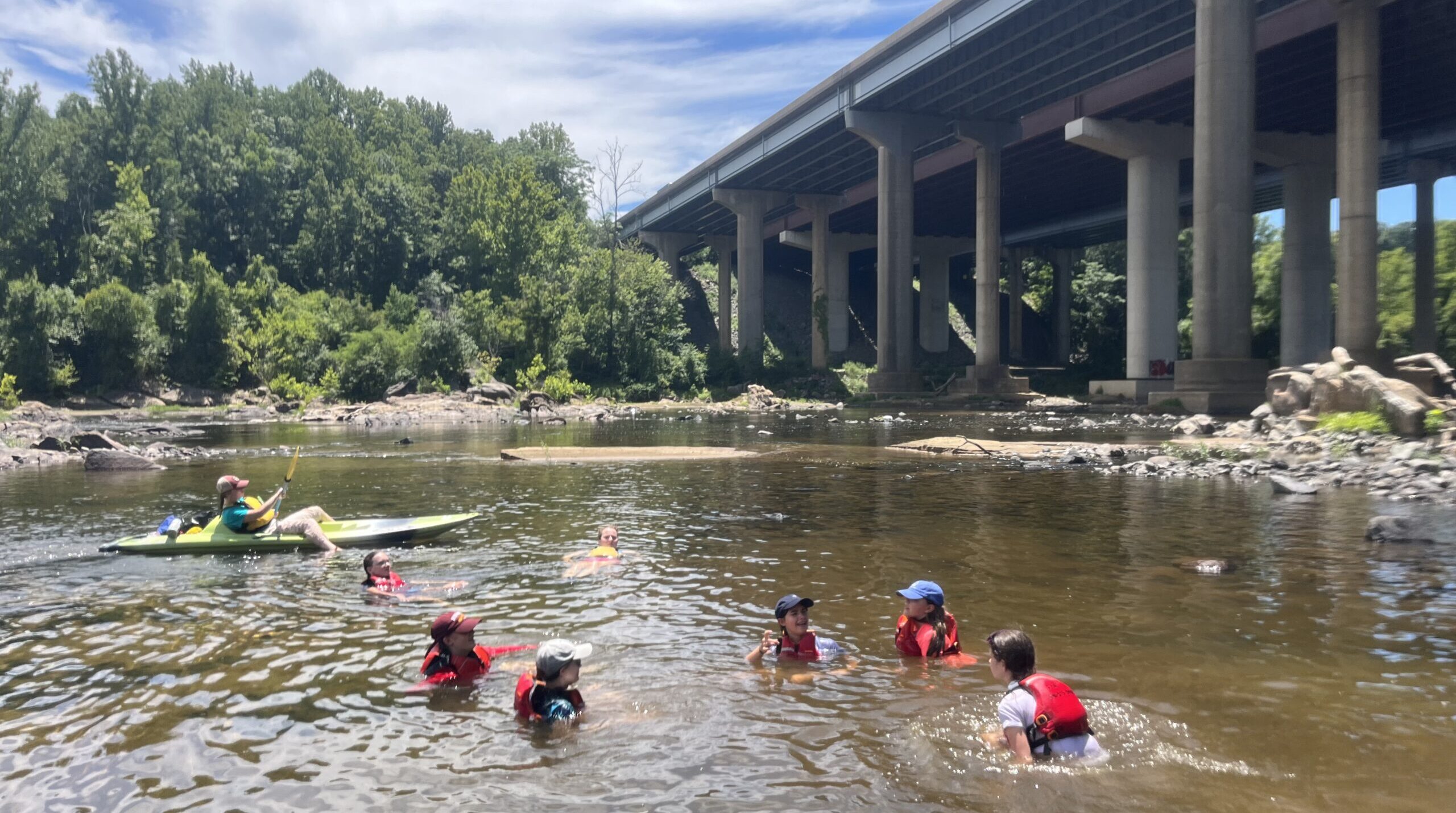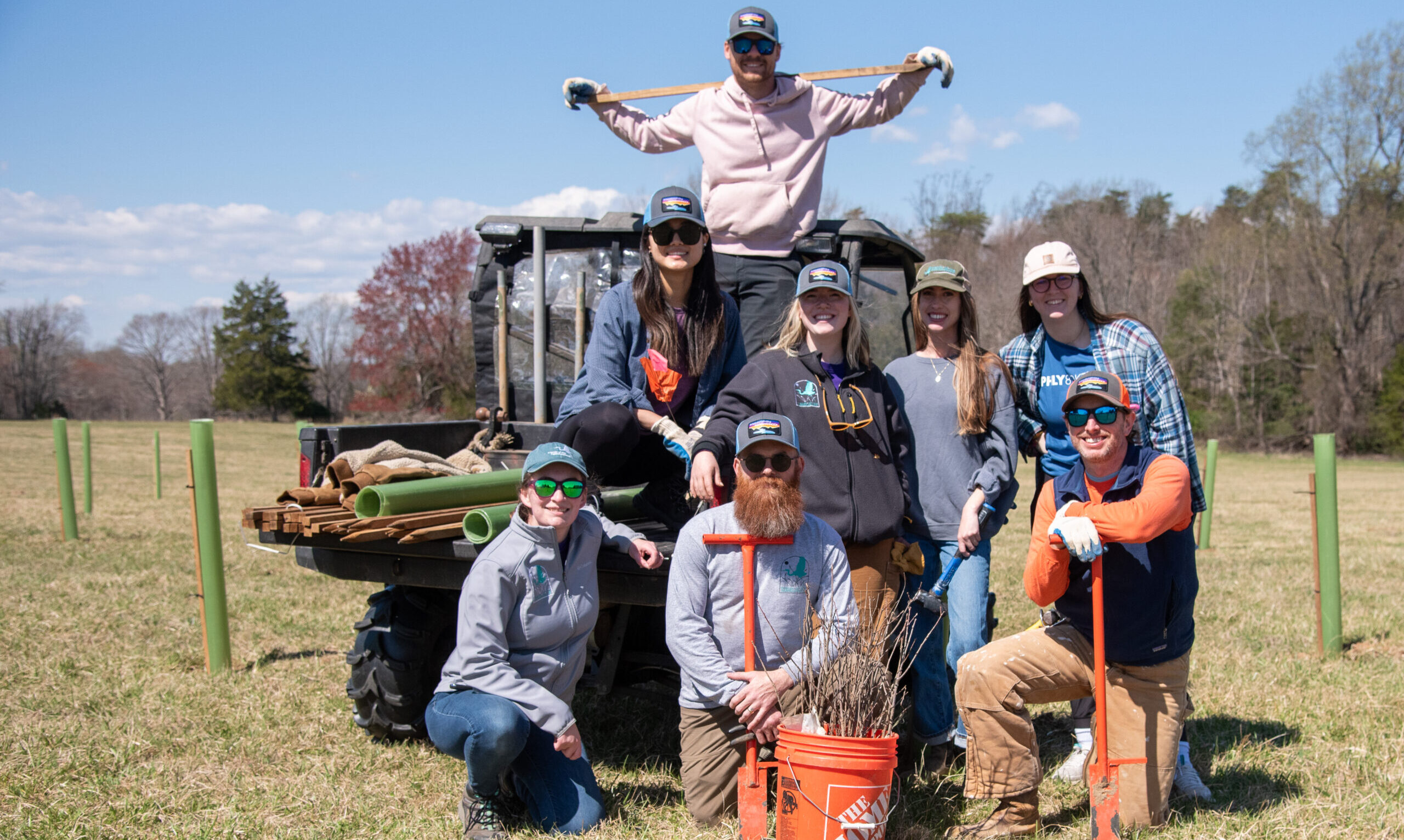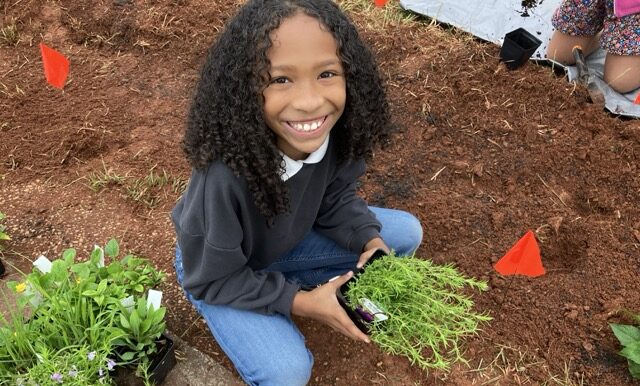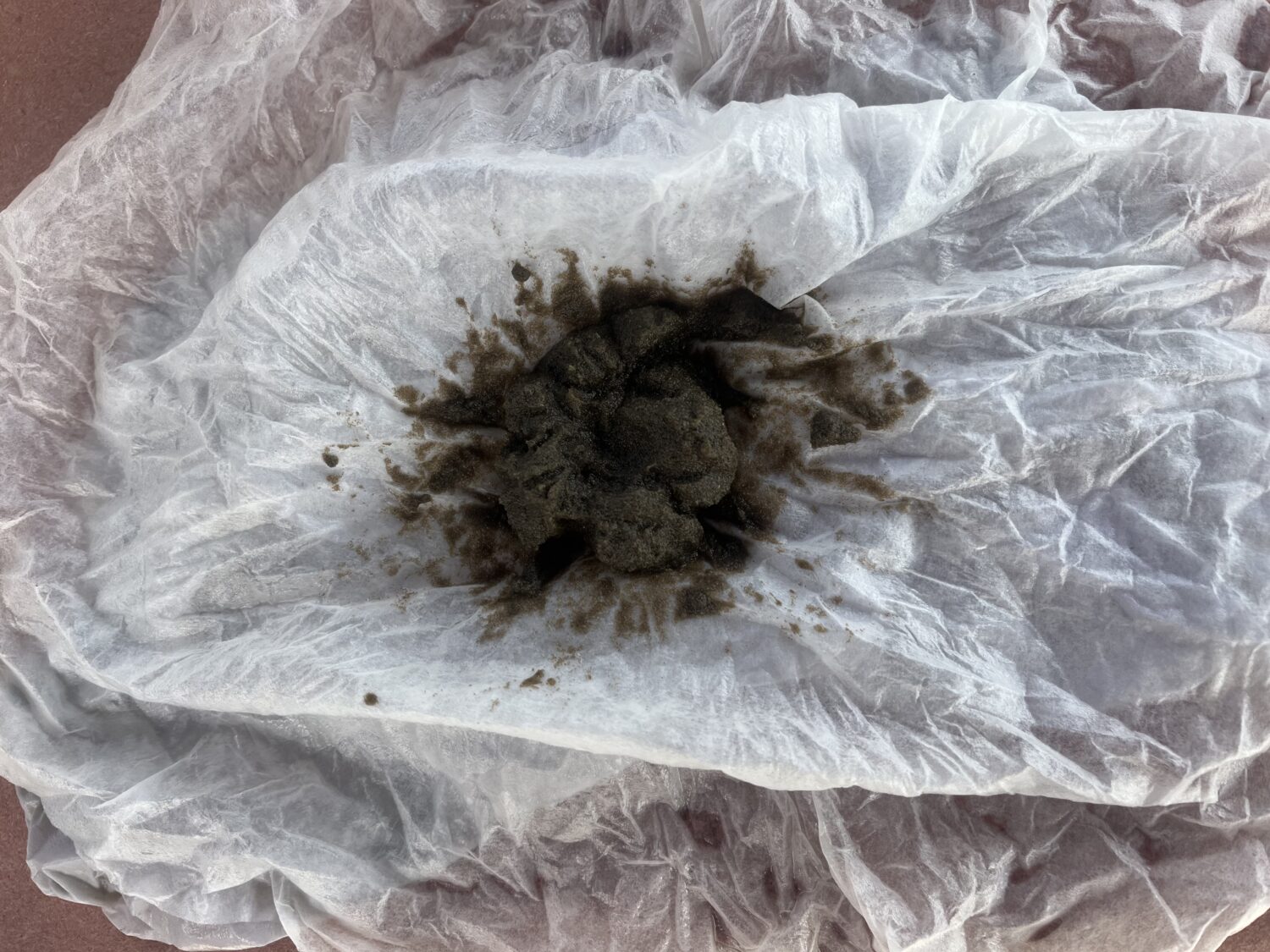Have you ever held 2 million babies in the palm of your hand? 2 million OYSTER babies, that is. That’s exactly what happened this past summer as we were trying our hand at an oyster spat-on-shell operation with the Tides Inn for the first time.
But what is spat-on-shell? When oysters reproduce, one of their early life stages is a small larvae floating in the water column. These larvae are searching for a safe home where they can settle and live for the rest of their lives. Given the right conditions, the larvae can settle on objects like dock pilings, rocks, or other hard surfaces, but the best place for them to land is on other oyster shells. When the oyster larvae lands on the oyster shell (or the other hard objects), it is called spat.
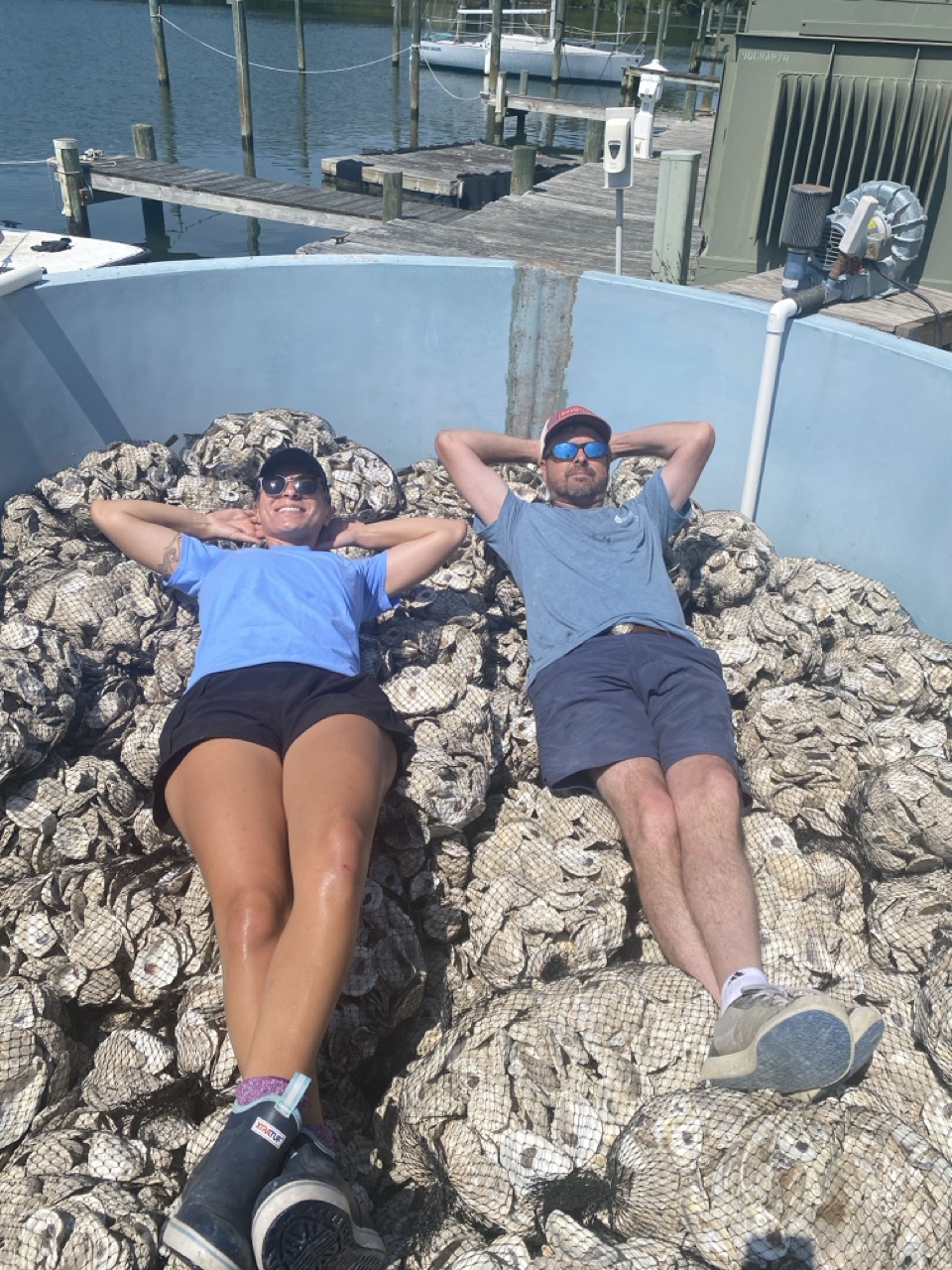
Oyster Restoration Specialist Jen Sagan and Tides Inn Resident Ecologist William Smiley, hanging with recycled oysters prior to introducing the larvae to the shell.
For our operation with the Tides Inn, we use a large tank that is pumping in and filtering water from the River. There is also an aerator in the tank that is constantly bubbling the water, to ensure better flow and movement. We place 200 bags of oyster shells and 2 MILLION oyster larvae in this tank. The larvae settle on the shells in the bags and we place that spat-on-shell out on our reefs for restoration.
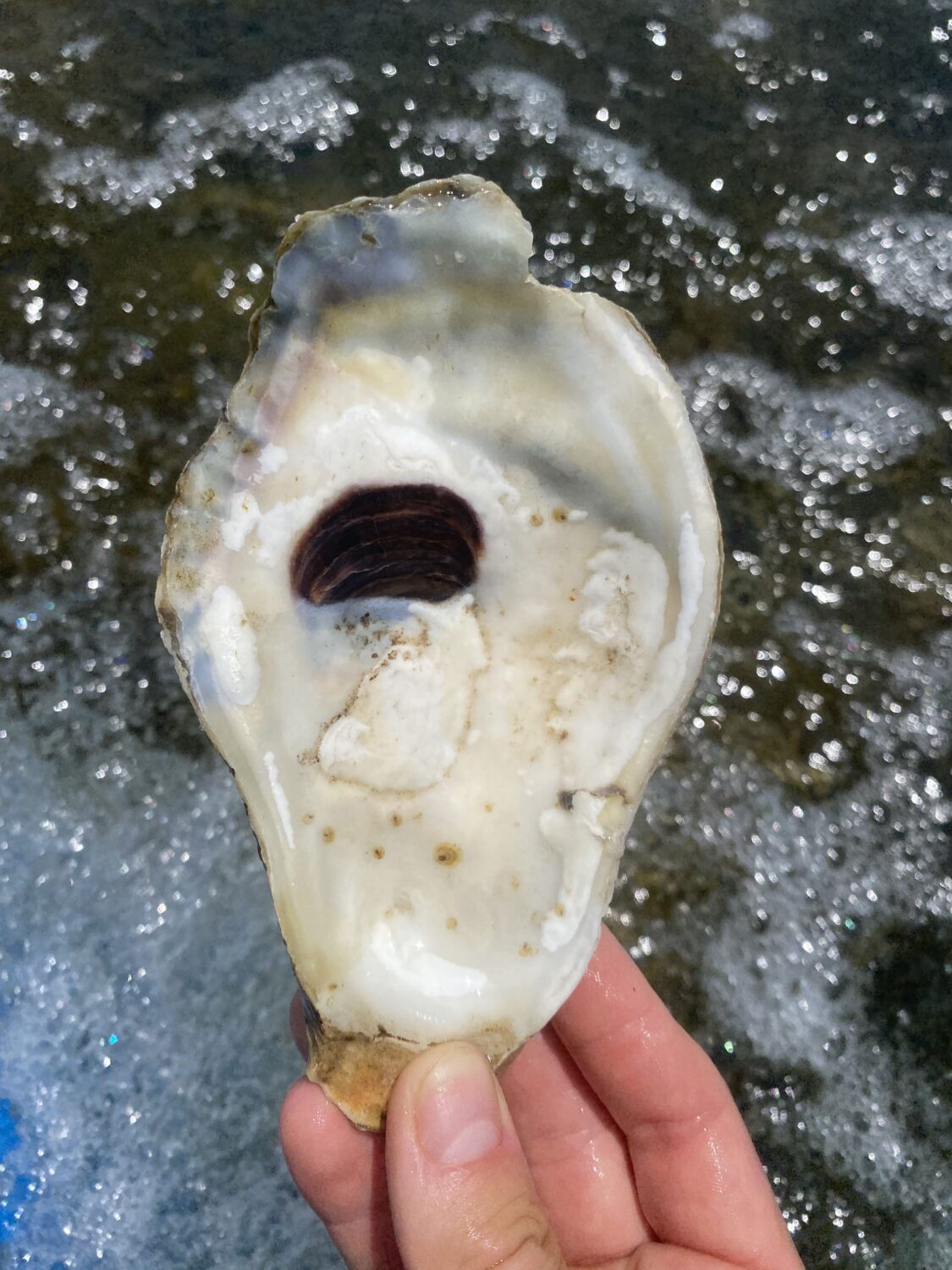
Oyster Spat on Recycled Oyster Shell. Look at the tiny circles of discoloration, those are baby oysters growing!
In this summer of 2023, we did 3 tanks of spat-on-shell. This means that we placed about 880,000 new oyster spat onto our reefs!
